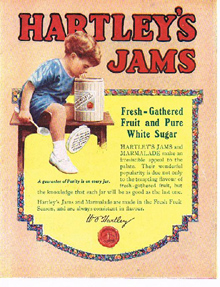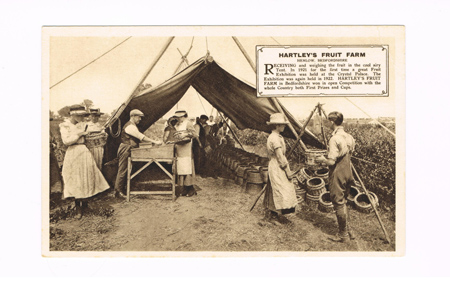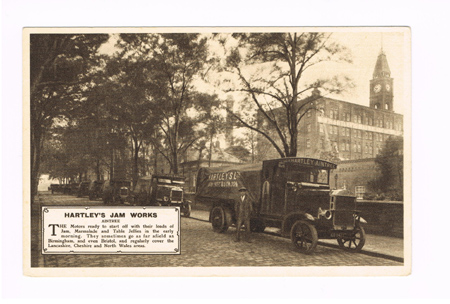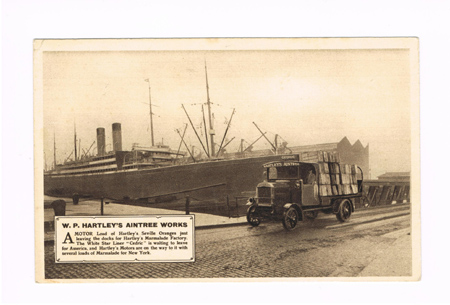|
 Fruit growing has long been an important part of life in the Ledbury area. One company which played a central role in developing this was Hartley’s Jam, which used the fresh farm fruit to make a wide range of jams. Fruit growing has long been an important part of life in the Ledbury area. One company which played a central role in developing this was Hartley’s Jam, which used the fresh farm fruit to make a wide range of jams.
Now a new book celebrates this unique business. Bittersweet: The Story of Hartley’s Jam charts the story of a great preserves empire and the extraordinary man at its heart.
In a life that spanned the Victorian era of idealism and invention, William Pickles Hartley rose from comparatively humble beginnings to create one of the largest preserves firms in the world. With purpose-built factories in Liverpool and London, Hartley’s was ‘the greatest name in jam making.’
Hartley’s was a huge business. The firm used almost a quarter of the world’s supply of Seville oranges and chartered its own ships to transport supplies from Spain. The factory was capable of making over 600 tons of preserves a week, and when the weather was warm and supplies abundant, special trains were laid on to collect the fruit from the fields.
At the height of summer, trains laden with fruit crossed the nation from farms at Martham in Norfolk, Ledbury, Evesham, Abernethy, and Blairgowrie in the east of Scotland, where wagonloads of freshly picked raspberries were hitched to the back of the midnight train from Glasgow.

Hartley’s purchased blackberries from Ireland that were sent by steamer to Liverpool, apricots from Murcia in southern Spain and in the years before the First World War, blackcurrants from Boulogne. It also turned fruit into a variety of associated products, such as table jellies, sauces, bottled fruits, and candied peel - made from the surplus peels of oranges and lemons.
The firm sold its products the length and breadth of Britain, and throughout the Empire. Hartley’s marmalade stood on the breakfast table of King Edward VII, and in 1911 Hartley’s preserves were packed into the supplies Captain Scott took with him on his expedition to the South Pole. The White Star Line, owners of the Titanic, served Hartley’s jams on its fleet of ocean-going liners, as did Cunard, and Union-Castle, the main shipping line to South Africa.
Hartley, however, was not simply a profit-seeking businessman. He was an enlightened entrepreneur who used the profits from his factories in the name of a greater good. A celebrated philanthropist, he built a public sanatorium for consumptives, a Botanical Institute, an orphanage, workshops for the blind, hospitals and almshouses. He also built a model village beside his factory, which in its day ranked alongside Port Sunlight and Bournville in the creation of good housing for the nation.
Nor were his interests confined to the purely functional. Two days after Louis Bleriot made his historic cross channel flight in the summer of 1909, Hartley offered a prize for the first ever air flight between Liverpool and Manchester.
At the time of his death in 1922, he had amassed a fortune of over £1 million, and it was estimated that during his lifetime he had given away an equal amount to charitable causes.
‘His is a truly inspiring story,’ says Nick Hartley, a direct descendant of the manufacturer, and author of the book.
Bittersweet: The Story of Hartley’s Jam by Nick Hartley is available on Amazon and from major bookshops.



|